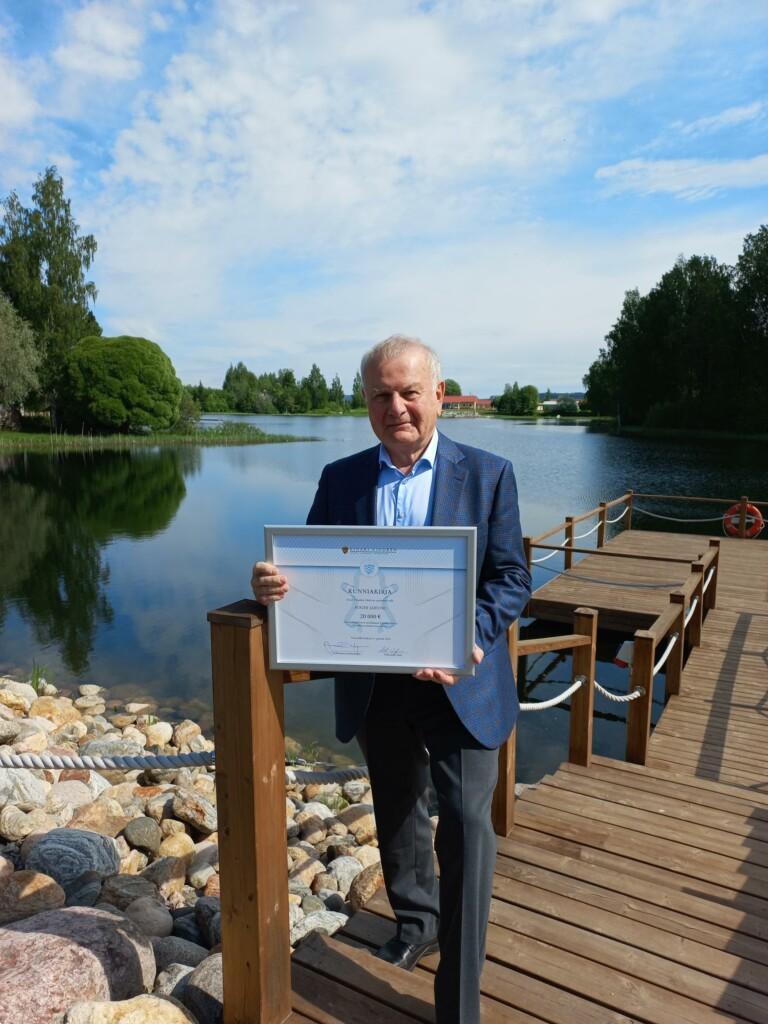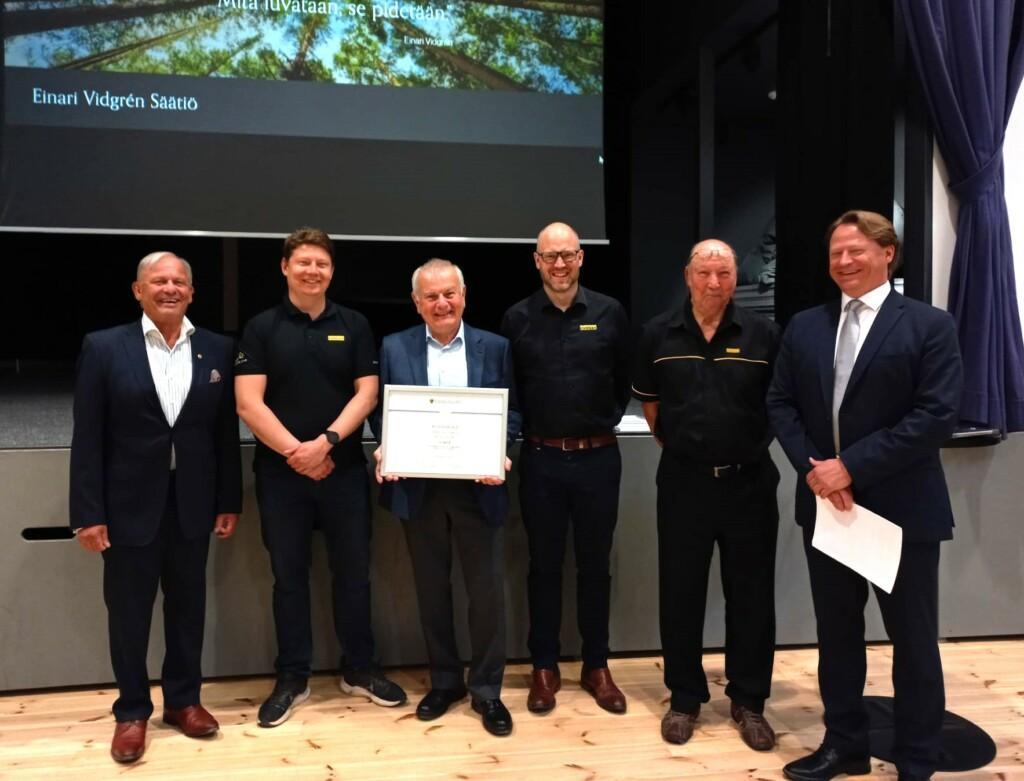
Roger Lejeune, a spokesperson for the cut-to-length method
Correct quantities and costs under control
Roger Lejeune from Belgium knows that the calculator plays an important role in harvesting. However, he does not need one because he can do the maths in his head, just like his father could. Lejeune ending up working in the forest industry is another part of his father’s legacy.
“Ever since I learned how to walk, I went to the woods with my father. He started working as a buyer at a local sawmill, from where he moved on to a paper mill,” Lejeune says.
“We spoke German at home, and my father spoke fluent French, but writing the paper mill’s reports in French was a bit trickier. So, I spent my weekends as a university student checking the grammar in my father’s French reports. This helped me learn much about the industry. I knew everything he did.”
Lejeune studied business management at the University of Liège. He received a six-month scholarship from the Ministry of Foreign Affairs to study in the United States and conduct a market survey for the Belgian furniture industry. This trip taught him many useful things for his future.
After the study period in the US and military service, his father’s employer, the paper mill, also wanted to hire the younger Lejeune at its wood procurement department. The job was to purchase pulpwood and build supply chains for it from Germany to Belgium.
“When I was young, I had one hobby: driving lorries. I drove international cargo for almost a year before my military service and the period in the US. This experience proved very useful later when setting up the paper mill’s logistics.”
Lejeune was in charge of wood procurement and logistics at the mill, and he also had to focus on road, port and rail transport. During the peak year of 1981, he delivered 300,000 m3 of pulpwood to the mill imported from Germany.
In 1986, Lejeune thought that he should use his ideas and skills for his own benefit. He left the paper mill to start his own company: CCBOIS SA.
He had extensive experience in the forest industry in Europe: wood procurement, harvesting, transport, sales and use. Another significant factor was his knowledge of differences in wood trade and measurement in different countries.
“Trees were measured differently in each country. If you don’t know this, it may cost you as you don’t know what the counterparty is talking about.”
A storm brought machines into the woods
At the end of 1989, a storm ravaged forests in the operating area of Lejeune’s company. His address book soon became useful, and he recruited Finnish and Swedish companies to harvest windthrows. Finnish and Swedish operators and harvesters made a big impression.
When they left, Lejeune bought his first harvester from a Swedish company. Now he had a machine but no operator. Roger Lejeune points out that, while you can buy machines, you also need to get them moving. Positive results cannot be made without skilled operators.
Operators played their part in 1994 when Lejeune bought his first PONSSE. The deal also included operators.
“This benefited both of us. Ponsse received feedback on the performance of its machines and technologies in Central European conditions for its R&D.”
Lejeune was able to modernise his harvesting operations, making it follow Scandinavian standards one step at a time.

A pioneer leads the way
The efficiency of the cut-to-length method and mechanised harvesting impressed Lejeune. Still, he also had to convince local forest companies. Doubters voiced negative comments: machines were believed to be too large, stumps would be too tall, and quality would be poor.
To prove the doubters wrong, Lejeune bought a piece of woodland with his partner to host a demonstration. They showed that machines do not damage forests when a professional operator is at the controls.
This is Lejeune’s way of doing things. If an idea feels good, he will put it to the test in his own forests, in his own company and at his own expense. You learn by doing, and he says that the best way to learn is by investing your own money.
With this principle, he started harvesting operations in Russia in 1996.
When travelling to Chile in 2007, he saw the need for mechanised harvesting and all the opportunities it had to offer. In 2009, he sent a forwarder and two harvesters to Chile to test the waters. Despite many efforts, the trial came to an end because customers were not ready to pay the asking price for the services provided.
“I was ten years early,” he says.

Getting quantities just right
Reliability is a word Lejeune mentions frequently. In harvesting and wood trade, correct quantities are key. This is why he is a strong supporter of harvester measurements.
“While prices can be negotiated, quantities have to be just right,” he says.
Eco-friendliness, high-quality work, and accurate dimensions and quantities have always been the strengths of Lejenue’s company. Lejeune focuses on metrics and data to keep a close eye on costs and quantities. Operations have to be cost-efficient.